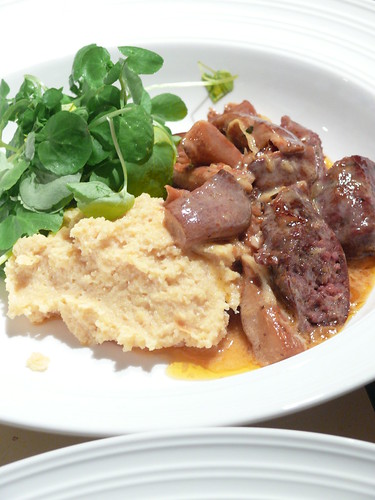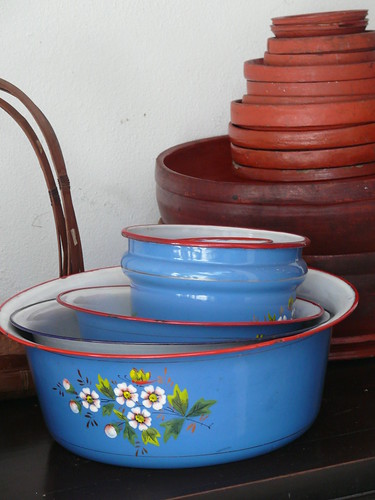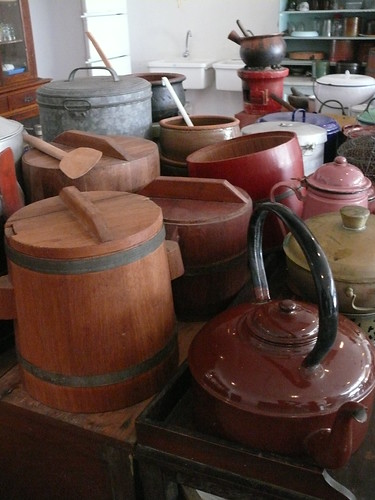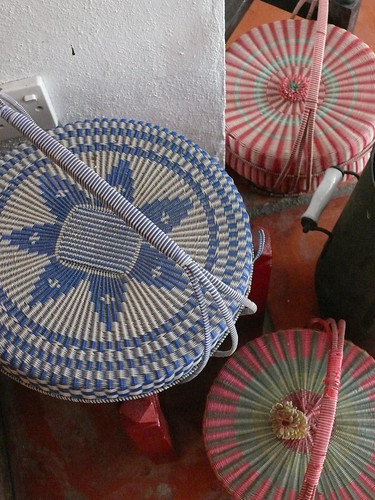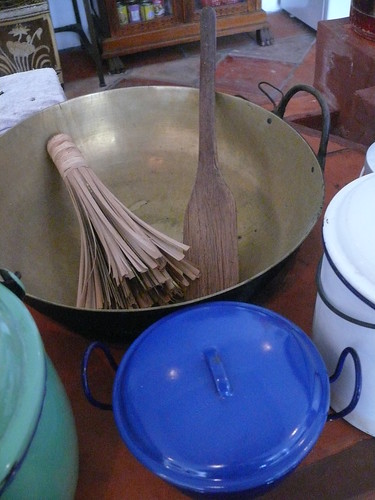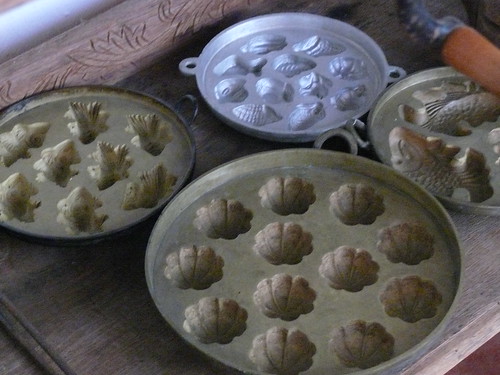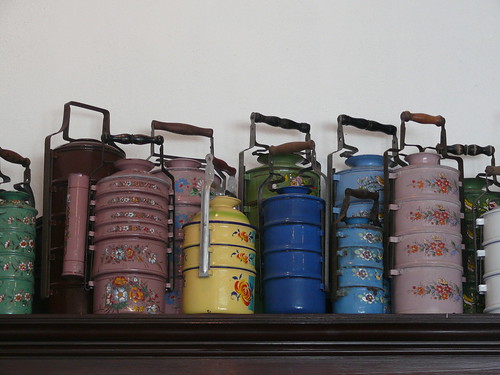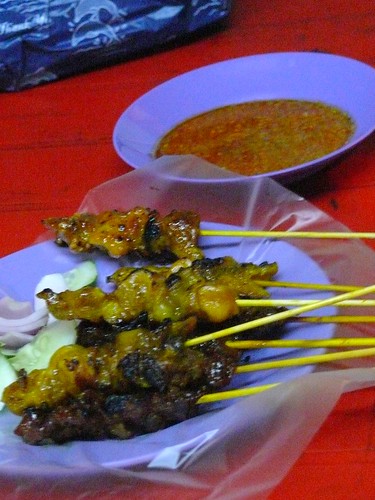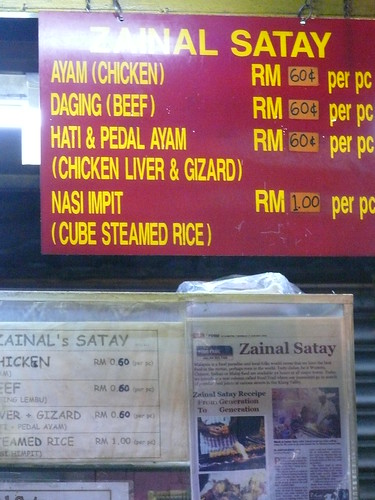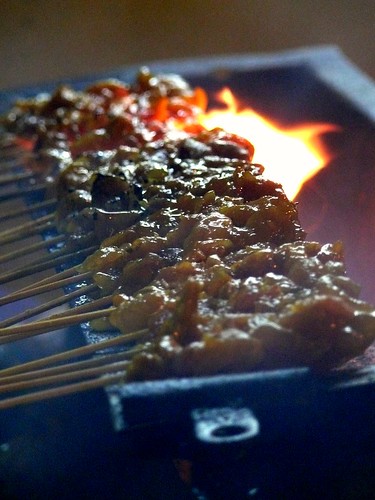Kaj and Gerda were looking at a picture book of birds and beasts one day, and it was then-just as the clock in the church tower was striking five-that Kaj cried:
"Oh! something hurt my heart. And now I've got something in my eye."
The little girl put her arm around his neck, and he blinked his eye. No, she couldn't see anything in it.
"I think it's gone," he said. But it was not gone. It was one of those splinters of glass from the magic mirror. You remember that goblin's mirror-the one which made everything great and good that was reflected in it appear small and ugly, but which magnified all evil things until each blemish loomed large. Poor Kaj!
A fragment had pierced his heart as well, and soon it would turn into a lump of ice. The pain had stopped, but the glass was still there.
The Snow Queen, Hans Christian Andersen
There was a time in my childhood that a friend once aptly coined ‘The Cupboard Under The Stairs Years’. In this time I acquired a number of culinary skills from the families I lived with, as a way of trying to find some social connection with my foster mothers in the face of a deep sense of abandonment.
I am the child of two very bright individuals. But with the gift of great intellect sadly often comes erroneous social deficit, so the burden of having a child meant that I was often in the care of others. Shy and struggling with childhood relationships while feeling unconnected to other children, I gravitated towards the company of adults and to the kitchen.
Modern psychologists would now assess that I experienced a form of childhood attachment disorder and that food then became my link to love. I was consequently given culinary tasks to occupy my time. As I related to
Ed, I recall vigorously cleaning and peeling squid and octopus, and of finding satisfaction in peeling poached ox tongues, happy to contribute by doing small undesirable tasks for others. And this is also how satay came into my life.
It was the mid nineteen seventies. I was in primary school at the time and staying with old family friends - a blended Hong Kong and Singaporean Chinese family. The couple came to Australia originally to go to university, but stayed, married, had children and now spoke with broad Aussie accents. They were more integrated into the local culture than my parents and seamlessly blended the Chinese Culture with being Aussies.
My foster parents had not only generously taken me in, but had been volunteering their time at a migrant hostel where Vietnamese refugees were being temporarily housed. Many of the refugees were either Southern Vietnamese or Ethnic Chinese so although they did not speak English, we shared Cantonese in common. I had no knowledge at the time that I too had family in Vietnam. My Foster parents selflessly helped a great many of these people to resettle in Melbourne and introduced them to the Australian Asian lifestyle.
One weekend my foster family and their friends - including my parents – hired a large tour bus to bring some people from the hostel to their beach house in Mount Martha for a day trip. All ‘The Aunties’ were bringing food, and my Singaporean Foster Mother and I made satay. I recall spending two days preparing the satay and from that point on, if she was having satay at a dinner party it became my task to prepare it.
I loved silently immersing myself in the process. Preparing marinade, cutting strips of meat, shelling and de-veining prawns and carefully threading them onto water soaked bamboo satay sticks. My foster mother always made the satay sauce as I was kept well away from the stove.
I've been refining the recipe ever since - always working by taste and by sight. Now I have Mr Stickyfingers' palate, care and attention to add to the process and to protect me from my anxieties. He is a Godsend.
Back in Malaysia recently, Mr Stickyfingers and I consumed mountains of satay. The best in our opinion - that we tasted on this latest jaunt - was in Chinatown’s Petaling Street Market from Zainal Satay (pictured).
As we came through the steamy throng of vendors of pirated handbags, sports shoes, jewellery, t.shirts, DVDs and souvenirs, the distinct smell of satay over a charcoal brazier wafted our way. Then with a brilliant flash of fire in the nightscape, we spotted the Satay hawker. This man obviously had a fan club and a couple of newspaper clippings describing his satay festooned the cart from which orders were taken and the satay was dispatched.
Hunkered on low plastic stools at folding tables we watched as people bought large amounts of takeaways. Sixty eight year old Zainal Ismail bent over his long Hibachi brazier sweeping a marinade of sugar and oil over the sticks, and ignited them with roaring fire, ever so slightly blackening the edges, before turning them as he has done for 28 years. Each stick was fragrant and moist and came to the table with cucumber pieces and raw red onion, alongside a sublime peanut sauce. We ordered more, and then came back for another session a day later.
A heady combination of lemongrass and ground rhizomes flavoured the peanut sauce. It was so good I wanted to lick the plate. His recipe originates from Jakarta and he prepares 1,000 sticks of satay a night. In Penang we were told that the Chinese in Malaysia use sweet potato as their sauce base, while the Muslims like Mr Ismail use peanuts. As I recall, in Vietnam their satay sauce is a blend of Chilli oil, palm sugar and peanut powder, with intensely flavoured, pungent seasonings. I find all versions are delicious, perhaps because its flavour hearkens an umbilical connection to the shadows of my childhood.
RECIPE
Satay - chicken & pork or beef
Makes 78 Satays and a vat of sauce
Start preparations the day before serving, in order to marinade meat. The sauce will also develop more flavour over the first 24hours
4 skinless chicken thigh fillets
2 small pork loin fillets
or
350g lean beef such as chuck
3 tablespoons ground Coriander seeds
3 tablespoons ground Cumin
3 tablespoons ground Fennel seeds
1 cup bruised and julienned Lemongrass
1 cup julienned young Ginger
1 cup julienned Galangal
150g julienned Turmeric root
1 very large clove of garlic
3 shallots or an equal quantity of onion
2 small fiery chillies
3 tablespoons tamarind paste
3 tablespoons Kecap Manis
6 tablespoons fish sauce
2 cups finely ground (powdered) peanuts
300ml Canola/Peanut Oil
1 tablespoon Belanchan
2 large disks of light palm sugar
250ml coconut milk
water
100ml Chilli Oil
Juice of 2 limes
cup of coarsely ground peanuts
MARINADE
Dry roast coriander and cumin in a wok until the aromas are released. Set aside.
Pound julienned lemongrass, ginger and galangal in a mortar and pestle until a paste is formed and the fibres have been broken down in the rhizomes. You can do them separately or mix them, depending on the size of your equipment. Transfer to a blender with the fresh turmeric.
If you skip the mortar and pestle you will weaken the flavour and your marinade and sauce will be full of unpleasant fibres. To get around this you can blend the ingredients and then place them in a muslin bag and squeeze out the juice, then discard the fibres, but it still won't taste as good.
Pound garlic, chillies and shallots in the mortar and pestle until you have a paste and add to blender with the rhizomes. Add 100 ml of oil and blend into a smooth paste. Add half of the dry roasted spices and incorporate into the paste with 2 tablespoons of fish sauce, 1tbs of Kecap Manis and 1 tbs of tamarind paste. Blend until combined. Take half of the paste out to be your marinade. The rest will be your sauce base.
MEAT
Thinly slice your meat and place chicken and pork into separate plastic bags with the marinade. Massage the marinade through the meat and leave refrigerated for 24 hours.
Soak bamboo skewers for 1hour in warm water. Before serving skewer satay flatly onto sticks. Don't be tempted to make it big and chunky, satay should be grilled quickly over hot coals and brushed with a mixture of cooked oil and palm sugar. It's a mouthful of meat rather than being a Shashlic.
SAUCE
For the sauce, dry roast the ground peanut powder. Remove from pan. Open all your windows and doors to fry the pungent Belanchan in a wok with some oil over high heat – otherwise your home will stink for days to come. Add one spoon of fish sauce and the remaining dry spices, continue to fry.
Reduce the heat to medium. Add in the rest of the paste from the blender and combine.
Add the rest of the Kecap Manis with melted palm sugar and then add the roasted peanut powder. The mixture will be firm by this stage so thin with coconut milk and water at your discretion until you have the desired consistency.
On low heat, season to taste with fish sauce, lime juice and chilli oil, working quickly to stop the the flavours of the rhizomes from dissapating. Finish with coarsely ground peanuts and if you want a more pungent flavour toss in some powdered Ikan Bilis.
Serve sauce at room temperature on flat dishes for dipping the meat into, alongside cucumber, onion and Nasi Impit - rice parcels. Left over sauce can be frozen or placed in a jar, with the surface covered by a thin layer of oil and kept in the fridge.






